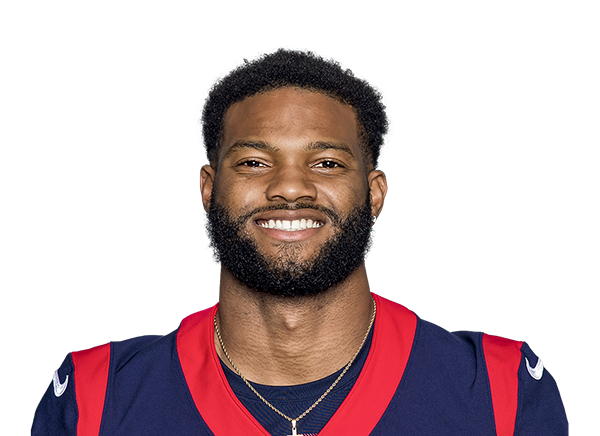January Dynasty ADP Risers and Fallers: Wide Receiver

The first ADP update of the 2023 season is here. I am here to discuss each position and pick out risers or fallers who stand out. The articles will speculate on what to expect moving forward. This initial article will not have the 2023 rookies as they were not included in January 2023 ADP.
I will have additional articles as the off-season progresses with updated ADP. For now, let’s look at January’s. The ADP was from 1QB mock drafts.
Introduction
When a startup draft kicks off, you will have to implement a strategy. There are multiple strategies to choose from. To keep it simple, we can work off the premise of having a win-now or first-year punt strategy. There is no right or wrong strategy. The goal is to win championships, not necessarily hoard young talent.
If you want to win now, then you draft the aging players. If you want the first-year punt, then you draft younger, hopefully proven, players to build around.
Wide Receivers
You may have heard it is best to create a foundation with young and proven wide receivers. The believed ‘shelf life’ is likely the reasoning behind this notion. It is assumed this position has longevity. Below is a screenshot of when to expect wide receivers to be taken. This board follows your typical snake drafts. For reference: Tyreek Hill was pick 12 and Tee Higgins was pick 13.
This screenshot went through round 15 which concluded with the WR76. If you want to see more, click here. It should come as no surprise that Justin Jefferson and Ja’Marr Chase were the first two wide receivers off the board.
In general, the risers were young receivers and fallers were aging ones. No surprise there.
I will go into more detail on as the article continues. The kernel of information you need to pull from the above screenshot is that drafters seemed to value the young wide receivers over the aging wide receivers. This does not mean aging wide receivers will not produce for you. This does not mean young wide receivers will produce for you.
Notable Wide Receiver Selections
Cooper Kupp, LAR: WR26, ADP 49.67
Kupp is our WR16 but is being drafted as the WR26 with the first pick in the fifth round. One year ago (1/2022) he was being drafted as WR10 at pick 17.67. This is a drastic change. He will be turning 30 before the season starts. This may be the reason for the fall. We know Kupp is a great wide receiver – many people may call him elite. If you believe this to be true you should read an article I wrote on elite aging wide receivers and the value-to-production conundrum.
Kupp is extremely talented and will be the focal point of the Rams’ offense. In 2022 he had 98 targets and 75 receptions… in just nine games.
Davante Adams, LV: WR13, ADP 24.17
This is a surprise because he is older than Kupp. There is no denying Adams has superior talent, but is there a difference in production? This ADP was taken with the assumed notion Derek Carr will not return to the Raiders – which was confirmed via his Twitter post after mock drafts started. Side note, this is one example of what influences ADP shifts. Continuing on, Matthew Stafford has his injury problems but he spoke on his wife’s podcast (12/2022) he will not be retiring. So why such a drastic difference between these two veterans?
Proven Young Wide Receivers: First Three Rounds
The first three rounds have young talent, one- or two-year experienced players, being selected. Jaylen Waddle (WR5), Amon-Ra St. Brown (WR6), Garrett Wilson (WR9), Chris Olave (WR10), DeVonta Smith (WR14), and Drake London (WR15) were chosen. Tee Higgins (WR8) and DK Metcalf (WR12) are still under 26 years old too.
This should come as no surprise with the production you are able to get paired with the perceived longevity of the position. Players like Wilson and Olave were selected with current question marks at the quarterback position. Drafters did not care about that. Talent does not change, situations do.
Additional Young Wide Receivers: Under age 26
Gabriel Davis was a riser. Last January his ADP was 103.0 yet his current ADP is 78.33. What did he do to warrant this? He had 13 more receptions and 287 more yards. The positive surrounding Davis is his ability to find the end zone, having no less than six touchdowns in each of his three seasons.
Additional risers (1/2022 to 1/2023) with notes:
- Tee Higgins, CIN: 24.0 to 13.5
- DeVonta Smith, PHI: 34.5 to 25.0
- Michael Pittman, IND: 43.33 to 37.0
- There are rumors floating that he could be part of a trade to Chicago for the 1.01.
- Amon-Ra St. Brown, DET: 51.81 to 11.5
- He has gone from a questionable fourth-round (NFL) rookie selection to being a round-one start-up pick.
- Brandon Aiyuk, SF: 53.0 to 46.0
- I am curious if his ADP will change pending the team he is on in 2023 – if he becomes a team’s WR1 (Giants/Chicago).
Elijah Moore was another faller. Last January his ADP was 41.27 and his current ADP is 82.33. The Jets had a unique season cycling through three starting quarterbacks and a frustrated Moore on top of this. I think it is fair to assume Moore is not a WR1 talent-wise. I think it is also fair to assume he is talented with the ability to complement Garrett Wilson.
Additional fallers (1/2022 to 1/2023) with notes:
- DK Metcalf, SEA: 14.5 to 20.5
- Jerry Jeudy, DEN: 48.0 to 59.33
- A result of Russell Wilson’s down year?
- Rashod Bateman, BAL: 58.33 to 71.33
- Injured and potential Lamar Jackson departure?
Aging Wide Receivers
Mike Evans (ADP 59.83) and Keenan Allen (ADP 69.67) were selected within the first six rounds because they have been producing consistently for, at least, five years now. Allen is tied to Justin Herbert and Evans, well, he may not have Tom Brady in 2023. This does not mean Evans’ situation will not change.
DeAndre Hopkins will be turning 31 yet was taken before the seventh round (ADP 71.67). We know he is talented and paired with the assumed notion he will be traded, the assumed production will be there for the 2023 season – hopefully one or two more years. Again, read the aforementioned article about elite aging wide receivers and the value to production conundrum.
Aging wide receivers find guaranteed production (pending health) when they fall around questionable players like Gabriel Davis (WR39) – Evans (WR32) and Hopkins (WR37) for reference. This is the perfect example of why selecting the proven aging player is more beneficial than the younger player. On the flip side, this is why Davis finds himself outside of the first six rounds.
Discussion
It is fair to assume aging wide receivers naturally fall in ADP due to incoming young wide receiver talent. This is why I decided to reference rising and falling wide receivers under the age of 26. A talented wide receiver is a variable you want to understand. The player needs to be individually talented. DJ Moore is a talented wide receiver but is being held back because of his quarterbacks. On the contrary, I have seen wide receivers being propped up because of quarterback play.
This is a valid reason to like a player. Having a top-tier quarterback is beneficial. Having an individually talented wide receiver with a top-tier quarterback is desired. Another variable to note would be coaching scheme and tendencies. We have seen frustrated players (Elijah Moore) because they feel they are not utilized to their strengths. Coaches need to find ways to utilize their players’ strengths, even if this means going against their philosophy.
We will see ADP changes, risers and fallers, every year. It is important to understand the full scope of why this is happening. Talent, scheme, contract situations, and quarterback play are reasons to note.
A startup draft will have varying strategies implemented for wide receivers. Drafting the younger wide receivers before the aging ones is what seems to have happened in the recent ADP update. Remember, this does not mean the younger players will produce more. The longevity plan seemed to trump production.
- May Dynasty ADP Risers and Fallers: Tight Ends - May 31, 2023
- May Dynasty ADP Risers and Fallers: Wide Receivers - May 30, 2023
- May Dynasty ADP Risers and Fallers: Running Backs - May 29, 2023
























































